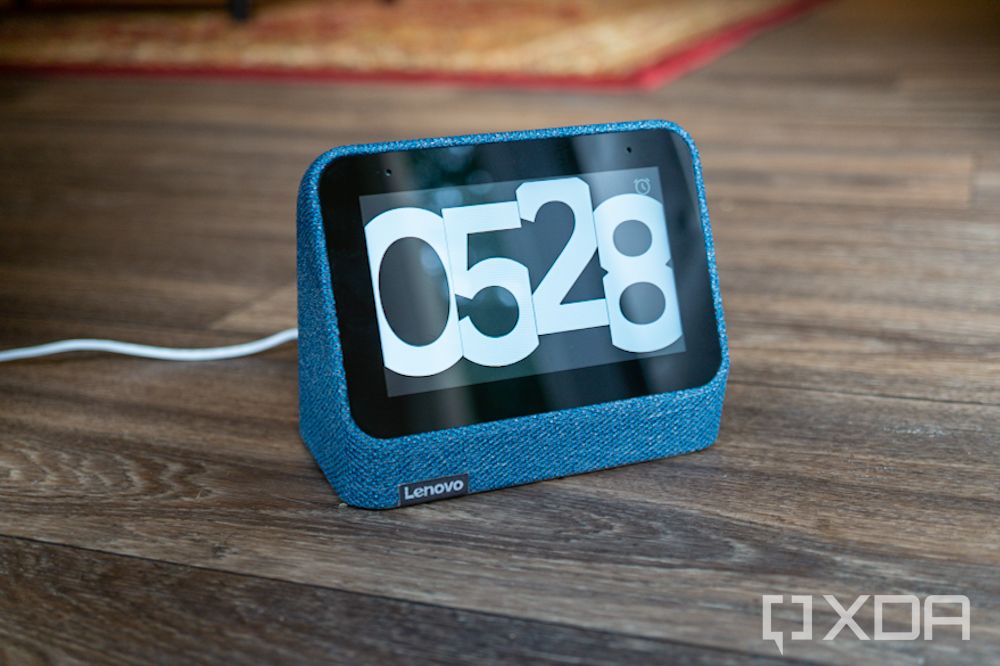
Another year has come and gone, and another CES is over. CES 2022 was very different compared to ones past, as despite a physical show for the first time since the pandemic began, many people chose not to travel. On the ground in Las Vegas, some companies were present while many initially planned to go and chose to bow out in the weeks leading up to the show as the Omicron variant emerged and became a wild threat.
Yet, as the phrase says, the show must go on and so CES 2022 certainly did. For the companies that were there, plenty of products were on show and while the show floor was nowhere near as busy as it usually would be, it was still a showcase of invention.
From cars to the smart home, from computing to mobile and all the categories in between, here are Team XDA’s picks for the Best of CES 2022, some of which we saw in person at the show.
Lenovo ThinkBook Plus Gen 3
If CES is good for one thing, it’s wild and crazy ideas like the Lenovo ThinkBook Plus Gen 3. The first two generations of the product were crazy enough, with an E Ink display in the lid. This one has a different secondary display, a full-color eight-inch touchscreen next to the keyboard.
At this point, you’re probably asking why you’d need such a thing, and that’s a reasonable thing to ask. It has multiple uses. For example, in the image above, it zooms in on a portion of the screen, and then you can use the pen to edit the image with precision. You can pinch to zoom, or you can scroll to different parts of the screen. Another thing you can do is take handwritten notes. If you’re reading a book or on a call, you can take notes on that eight-inch display.
Microsoft Whiteboard is on there by default. This is a pretty powerful collaboration feature, since Whiteboard automatically syncs in real-time. You can draw while on a meeting, and others will see it while you’re doing it. They can collaborate in real-time too, but they’ll probably need a second device because they’re not as cool as you with your ThinkBook Plus Gen 3.
Let’s not forget, it also has a 17.3-inch 21:10 display. The giant ultra-wide display results in that big chassis that allows for a full-size keyboard and an eight-inch touchscreen. Check out our hands-on article for the Lenovo ThinkBook Plus Gen 3 here.
Dell XPS 13 Plus
The Dell XPS 13 Plus is a brand-new entry into the XPS series, and it’s not replacing the standard XPS 13 because frankly, this is a pretty radical change. In fact, if you’re looking at the image above, you might be asking all kinds of questions, like where the touchpad is.
It’s still there, but you can’t see it. The touchpad on the Dell XPS 13 Plus is entirely border-less. It’s also got a brand-new keyboard, with larger keys that aren’t islanded.
Somehow, there’s something even more controversial than a touchpad you can’t even see. The regular F-keys that you’re used to are gone, replaced by capacitive keys. By default, they show the shortcuts that you’re used to, and if you hit the Fn key, they turn into the F-keys that you’re used to. Some have compared it to Apple’s failed Touch Bar.
Still, there’s no denying this device’s futuristic design and that it comes with the quality of a Dell XPS. You can check out our hands-on of the Dell XPS 13 Plus here.
ASUS Zenbook 17 Fold
Sure, a big 17-inch screen is cool, but do you know what’s even cooler? A 17-inch screen that folds. Indeed, ASUS announced just the second-ever Windows PC with a foldable display. While it is bigger, what makes this super interesting is that it’s the first in a broader wave of foldable devices that are coming.
At CES 2022, Intel also announced its first Evo spec for foldable-display devices, and the ASUS Zenbook 17 Fold is the first to meet that spec. That means that another way it differentiates itself from Lenovo’s ThinkPad X1 Fold is that it has 12th-generation processors of the 9W variety. Previously, foldables could only use Intel’s Lakefield chips, which weren’t very good.
The resolution of the 17.3-inch 4:3 OLED display is 2,560×1,920, and you can stand it up for one giant display. When folded, it turns into two 12.5-inch 1,920×1,280 3:2 screens, and there’s a keyboard that you can insert inside of it. Unfortunately, ASUS hasn’t announced pricing and availability yet, but nothing with Intel’s U-series processors are scheduled to ship before this spring.
Acer Chromebook Spin 513
There’s a lot of new silicon at CES 2022, including Intel’s 12th-generation processors, AMD’s Ryzen 6000 chips, and even a teaser of its Ryzen 7000 desktop processors. One chip-maker that might fly under the radar a bit is MediaTek, but the company has a brand-new processor for Chromebooks in the high-end tier.
Acer is the first to use the MediaTek Kompanio 1380 with its Chromebook Spin 513. The Kompanio 1380 is a chipset that’s competing more along the lines of an Intel Core i3, and indeed, MediaTek is a leader in ARM Chromebooks. However, until now, those Chromebooks were entry-level to lower mid-tier. The new chips that the firm is producing are hitting the upper mid-tier to the high end.
As for the Chromebook Spin 513 itself is pretty great too, chipset aside. It has a 13.5-inch 3:2 display with a 2,256×1,504 resolution and 7.7mm bezels. Given the new aspect ratio, it’s 18% taller when compared to a 16:9 screen. This makes a big difference for productivity. It’s also MIL-STD-810H certified, has DTS Audio, and has Wi-Fi 6, all for $599.99.
Dell UltraSharp 32 4K Video Conferencing Monitor
With so many amazing announcements, I almost feel like Dell’s UltraSharp 32 4K Video Conferencing Monitor has fallen off of the radar; but it didn’t for me. When Dell showed me this product at a pre-briefing weeks ahead of the show, I felt like I was seeing something special. Sure, it’s a 32-inch 4K monitor, right? It’s so much more than that.
It’s also for a 4K webcam built into it, which is a really big deal. After all, 4K webcams aren’t very common to begin with. The two main options are the Dell UltraSharp 4K Webcam and the Logitech BRIO. The UltraSharp 32 4K Video Conferencing Monitor actually includes the UltraSharp 4K Webcam; it’s just a lot smaller because a lot of the internal components are built into the monitor itself.
On top of that, it’s got echo-canceling dual-array microphones and 14W speakers. Between display quality, video capture quality, microphone quality, and speaker quality, everything is just the best you can get. Integrating all of that into a single unit eliminates a lot of cables from your desk too.
If you spend a lot of time on video calls and meetings, there is simply no better monitor to use, and it’s hard to imagine how you could even improve on it. It is the ultimate monitor in the work from home era.
The Dell UltraSharp 32 4K Video Conferencing Monitor is going to be available on March 29. Dell didn’t announce pricing, but it won’t be cheap.
Samsung Eco Remote

Samsung’s pre-CES 2022 keynote by CEO JH Han focused on a few key areas, one of which was sustainability. The company unveiled a range of sustainability measures, but arguably the most important is the Eco Remote. Although this is technically not new as it was launched with TVs last year, the Eco Remote is going to ship with every TV launched by the company this year which should go a long way to preventing the unwanted disposal of millions of batteries every year. This year’s model also enhances the solar charging from last year’s model by charging through harnessing RF waves, which makes it very interesting technology.
That in and of itself is newsworthy but what makes this initiative special is that Samsung is making the Eco Remote technology free and open source for other companies to use. The goal is to remove all the disposable batteries used in TV remotes, and the company also expects to bring this same technology to other accessories within its portfolio. As far as planet-saving measures, it’s hard to deny that this is one measure that has an immediate positive impact upon the planet.
Samsung Freestyle Projector
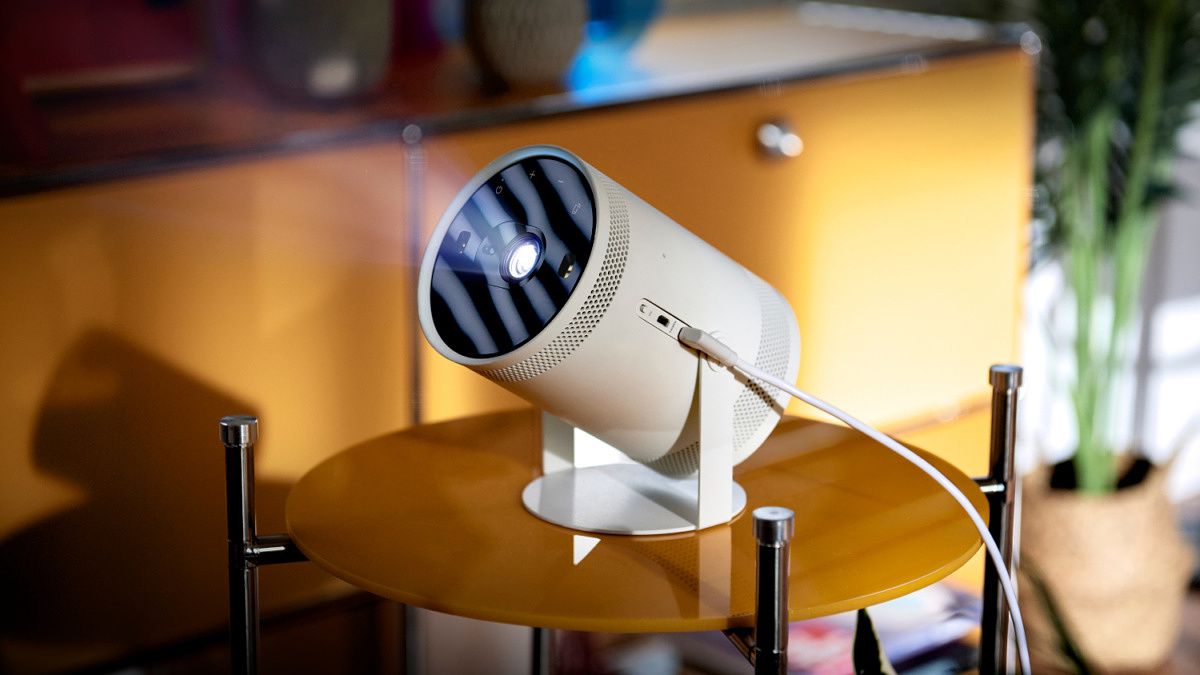
Samsung’s The Freestyle is one of our favorite announcements at CES 2022, weird nomenclature of “The” as a prefix notwithstanding. This portable projector can be powered by any battery pack that can output 50W, and offers a 180-degree swivel design so you can point, play and enjoy a large display wherever you are. It’s perfect for usage both in the home as well as on the go, and if you like to camp, glamp or just want to travel in style, this is the ideal friend to take with you.
It features a ton of smarts including the ability to optimize the screen size to fit the content, auto-focusing of the projector itself and auto-leveling, so there’s no chance you’ll have a crooked neck after watching a two or three-hour long movie. There’s also a 5-watt 360-degree speaker so you don’t need to worry about good audio quality, and it supports streaming apps, playlists and even lets you use voice assistants. It works with both Android and iOS, using SmartThings and AirPlay 2 respectively to get your content on the big screen.
It’s available to pre-order now for $899 and there’s a range of accessories that will launch soon, including new skins to change the color of The Freestyle itself. This packs a whole lot of punch in a small body and it’s one product that everyone should have.
- One of our favorite products at CES 2022, this portable projector packs a big punch in a small body. For $899, you get an incredibly talented projector that will work wherever you go and whether it is in your home, on a campsite or even in your garden, you should definitely buy The Freestyle.
Sony QD-OLED TV

If there’s a single technology that was on display in force at CES 2022, it was QD-OLED, which stands for Quantum Dot Organic Light Emitting Diode. The next generation of OLED display technology, QD-OLED is designed to combine the best of both technologies. Samsung has sold and marketed Quantum Dot for years as an alternative to OLED – which is primarily produced by LG Display – and Sony’s new QD-OLED display panel is being made by Samsung Display itself.
QD-OLED essentially combines the best parts of the OLED experience (such as perfect blacks and infinite contrast) with the best parts of the Quantum Dot LED experience like higher peak brightness and more vivid color reproduction at higher brightness levels (aka less saturation than OLED TVs at peak brightness). Indeed, Sony says that QD-OLED “boosts color brightness by up to 200 percent compared to conventional TVs” and given that OLED has long been the king of the TV display, it’ll be very interesting to see how the new QD-OLED standard compares when it starts shipping in the spring.
Alienware 34 Gaming Display (AW3423DW)
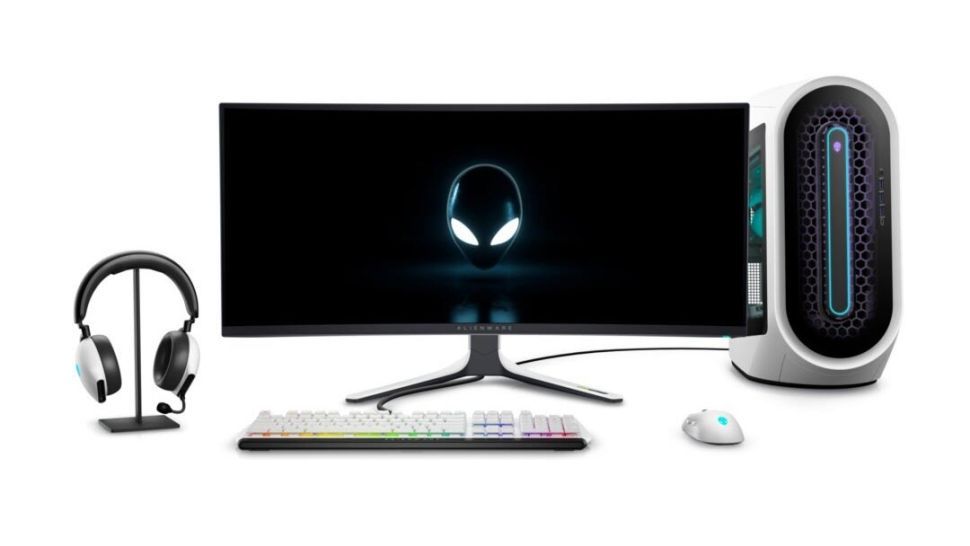
While Sony created the first TV running QD-OLED technology – which we could probably have seen coming – no-one could have foreseen the first QD-OLED monitor being made by none other than Alienware. Made using a Samsung Display panel, it has a ton of features that could make it a gamers’ paradise, and also the dream monitor for creative types everywhere.
It features DisplayHDR 400 True Black certification, covers the entire P3 Gamut and can reach 1,000 nits peak brightness. It’s factory calibrated, can switch between P3 and sRGB color profiles via the on-screen menus and lets you change the gamma settings. It features an aspect ratio of 24:10 (at 3,440×1,400 pixels resolution) and supports up to 175Hz refresh rate over DisplayPort, or up to 100Hz refresh over HDMI. If you want to use it as a display for your Xbox or PS5 however, it doesn’t support HDMI 2.1, which may be a deal breaker.
As far as monitors go, there’s a lot to like about the Alienware 34 Gaming Display and while they haven’t revealed a price, we won’t have long to go. It launches in China on March 2, will ship on March 29 and will launch in other regions beginning in April. One thing is clear however – QD-OLED is brand-new technology, and as we’ve seen in the past, brand-new technology is never cheap. That said, this monitor seems like it could be worth it.
Movano Ring

When it comes to wearable health tech, Oura makes the ring you’ve probably heard of, but startup Movano could be the next big one to watch. At CES 2022, Movano showed off a smart ring that incorporated all the same features as the Oura Ring 3rd Generation but also promised further features and all for a lower price.
The latter costs $299 and our CCO Nirave absolutely loves his, using it daily to monitor heart health following some medical issues. He says that if Movano can deliver on the promise of its ring – and secure the all-important FDA approval – it could be the must-have wearable in health technology this year, especially as the Oura Ring also requires you to pay a monthly subscription to access all of the more advanced features.
Movano is currently undergoing clinical trials of the radio frequency technology that would help it collect the data needed to monitor glucose and blood pressure. Given that these are used in the management of diabetes and heart disease respectively – and those are two of the biggest killers globally – to say that the Movano Ring could be lifesaving would be an understatement.
Withings Body Scan Scale with ECG


While Movano is still a ways away from launching – although it will be this year – Withings showed off its new smart scale at CES 2022 and it is thoroughly impressive. Combining everything you expect from a Withings scale – including weight, other body measurements and body type information – with several new features including body composition and most importantly, the ability to run an ECG, this is a scale that hopes to give you a snapshot of your all-round health.
The addition of an ECG is great and makes this the first scale with built-in ECG. It’s able to record a 6 lead ECG – making it one of only a handful of devices that can record 6 lead ECGs – and once it receives FDA approval and launches in Q2, you’ll be able to send the ECG recording to a licensed cardiologist to get examined as well. Sleep Apnea is a fairly common problem and being able to record an ECG while weighing yourself in the morning should help more people be diagnosed with heart conditions.



BMW iX Flow

CES might be a technology show but it’s also fast becoming a showcase of the latest automotive innovations. Companies from around the world take the abundance of space outside the traditional Las Vegas convention show floors to showcase everything from their latest infotainment systems to new in-car experiences and connected experiences. Sometimes however, there’s an announcement that just blows everyone away.
The BMW iX Flow did exactly that at CES 2022. When buying a new car, we’ve all been through that decision process of deciding what color to buy. It’s one of the most important decisions in the car buying process, simply because it’s a very public statement of your personality. The BMW iX Flow showcases technology that could help with this decision one day; simply put, it’s a color-changing car. Yes, read that again: it’s a car that changes its color.
The car uses a specially developed body wrap that similar in material to the Amazon Kindle. When stimulated by electrical signals, the electrophorectic technology surfaces different color pigments, which results in the color changing experience showcased in the video below. As far as technology goes, it’s one of the coolest automotive innovations we’ve seen in a long time.
HyperX Cloud Alpha Wireless Headphones

Some gamers still use wired headsets instead of wireless ones because the latter often doesn’t offer enough battery life and most gamers don’t want to deal with charging etc. The new HyperX Cloud Alpha Wireless headphones promise to solve this, and could basically be the best wireless headphones for gamers for one simple reason: they claim to offer 300 hours battery life.
That’s no mean feat; almost all gaming headsets come with double-digit battery life, although there are a few that creep past the 100 hours mark. The Sennheiser GSP 370 was the first to reach that mark with a claimed battery life of 100 hours and it captured the attention, so it’s unsurprising that the entire gaming industry is buzzing with the HyperX Cloud Alpha claiming to offer three times that amount. That’s almost an entire week’s continuous usage before you need to reach for a charger, and if you spend an entire week gaming, you might have larger issues to contend with than battery life. It launches next month and at a cost of $200, it might just be the best gaming headset for everyone.
Google Fast Pair
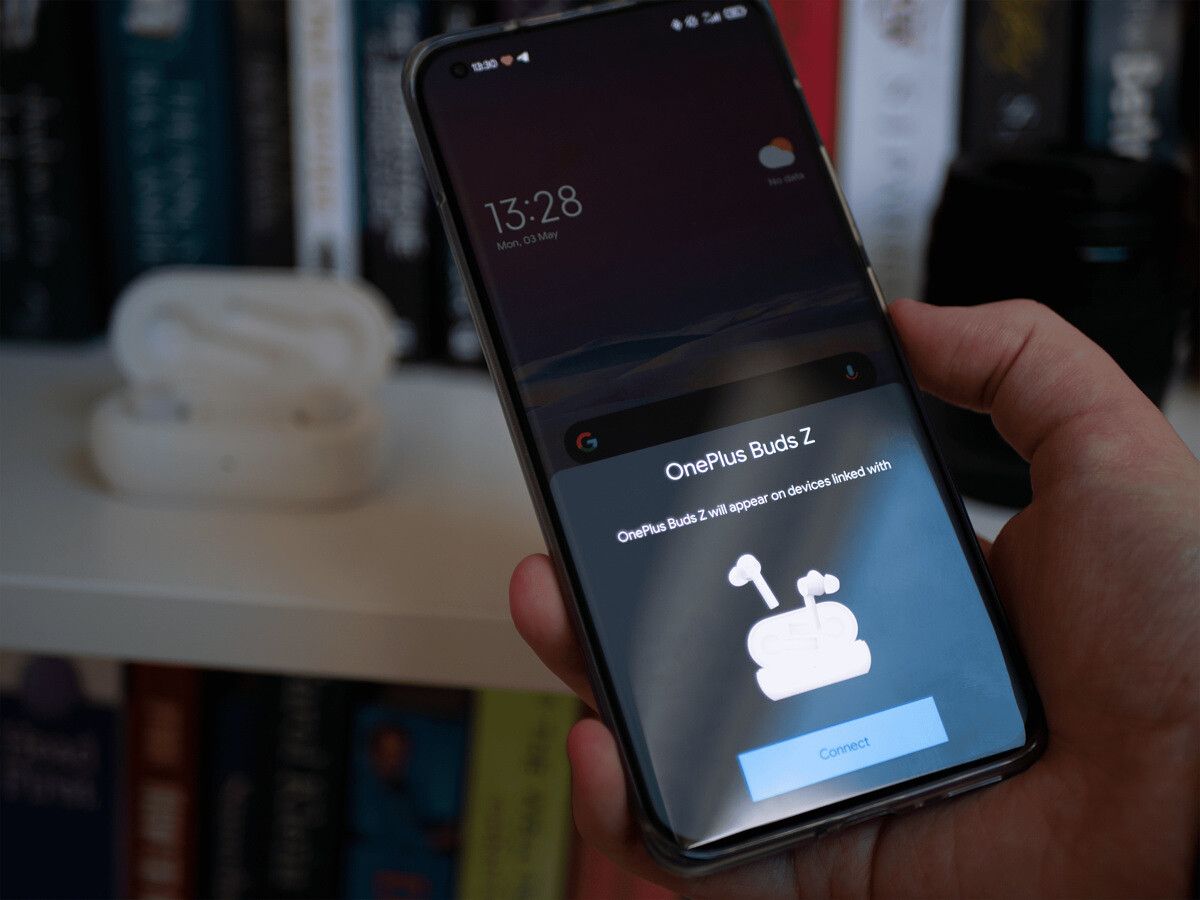
CES usually is the ground where new hardware and concept demos are shown off, so including a software feature may feel out of place. But Google did choose CES 2022 to announce a rather important and influential change coming to your personal tech sphere: more devices with Fast Pair.
On the face of it, the announcement may seem trivial. After all, pairing a Bluetooth device isn’t actually rocket science. But…it actually is, for the general populace at least. Apple has showcased the power of tight integration with its products, which has allowed it to touch over 3 trillion USD in valuation. The simplicity of opening a pair of new AirPods and having it show up magically on the iPhone, iPad, or Mac beside it is absolutely convenient to the end-user as they no longer have to fiddle with obscure menus that they know little about. This ease-of-use is underrated, and Google is attempting to bring them to a significantly more diverse ecosystem of products with Fast Pair.
You will soon be able to Fast Pair devices like supported headphones and earphones from OnePlus, Sony, Microsoft and many others to Chromebooks, Google TV, and Android TV. Further, Fast Pair support is also being extended to Matter-enabled Smart Home devices. Android phones and Chromebooks will also soon synergize better than ever before. All of these smaller experiences add up to a more seamless experience for the ecosystem, and Fast Pair from Google takes credit for the same. It may not be at the same level as the Apple ecosystem, but it’s progress nonetheless.
Jabra Elite 4 Active

The Jabra Elite 4 Active are an addition to the TWS lineup from Jabra, slotting in above the Elite 3. They are marketed as Jabra’s most affordable workout model at a price of $120, which is definitely more affordable than the next best Elite 7 Active at $180. You do give up on several features like Bluetooth multipoint pairing, ear detection sensors, and wireless charging. But what you get are decent options for workout earbuds that feature good ANC and transparency modes. You also get an IP57 rating which makes them great for working out without a worry about dust and sweat.
What makes the Jabra Elite 4 Active great is that they remain an easy-to-recommend product for a product category that still has scope for maturing. TWS come in all shapes, sizes, and prices, but good and reliable TWS need to become cheaper and more widely available. The Jabra Elite 4 Active don’t need to reinvent the wheel that everyone tries to do at CES 2022 — they just need to present themselves as another viable option that you cannot go wrong with.
- The Jabra Elite 4 Active are a relatively affordable pair of workout-focused TWS that aim for reliability. With ANC and IP57 protection, they make for a great option that remains easy to recommend from the house of Jabra.
Samsung Flex S, Flex G, Flex Note

CES traditionally isn’t a show that’s mobile focused, but Samsung bucked the trend this year by launching the Galaxy S21 FE. The last phone to be launched in the Galaxy S21 range – and just a few weeks before it likely launches the Galaxy S22 range at that – the Galaxy S21 FE isn’t going to excite the world. However, the other mobile adjacent products that Samsung showed off certainly will.
Before the launch of the first Galaxy Fold, Samsung unveiled new displays at Samsung Developer Conference, and at CES 2022, it showed off several next-generation displays that likely show us the future of Samsung’s foldable lineup. And we’re super excited.
The Flex S and Flex G take the Galaxy Z Fold 3 and up the ante by adding an additional fold. This essentially makes the internal display one encompassing three different parts when unfolded, and it’s clear that a future Galaxy Fold with this form factor would make it onto our best foldables list.
The Flex S is an example of what a foldable laptop from Samsung would look like and it’s one that we hope will be made into a real product someday.
Look at the videos above to see the new concepts in action and read more here!
Motorola MA1 Wireless Android Auto Dongle
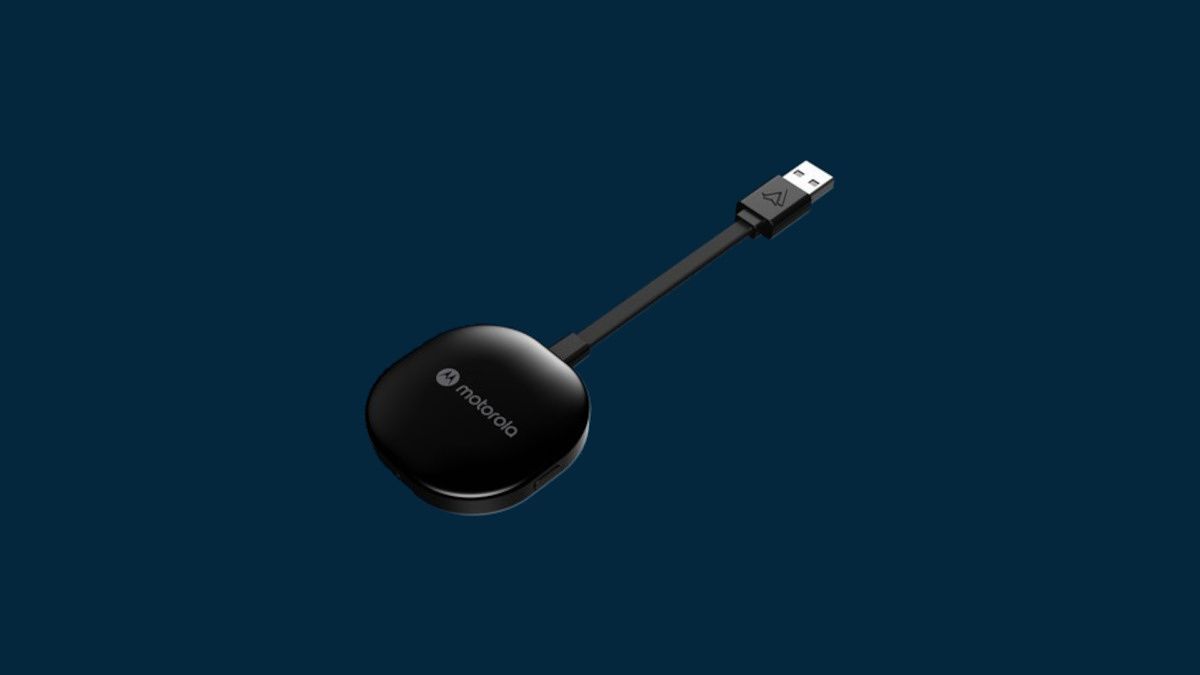
The Motorola MA1 isn’t the first dongle for wireless Android Auto, but it’s the first one you can soon go out to buy. Android Auto is in a weird spot, wherein most cars and entertainment systems need a wired connection but some newer head units support a wireless connection with your phone. Wireless is obviously more convenient, which is where these dongles come in.
The Motorola MA1 will be sold by SGW Global under the Motorola branding. You just need to plug the dongle into the USB port on your car or head unit that has wired Android Auto, and the dongle will let you then establish a connection to your phone over Bluetooth and 5GHz Wi-Fi. Further, you just need to start your car, which will automatically establish a wireless connection without requiring you to even remove your phone out from your pocket. For $89.95, this will be worth it for frequent users.
- The Motorola MA1 wireless Android Auto dongle lets you connect your smartphone with a wired Android Auto head unit wirelessly. This convenience is worth the price for frequent Android Auto users as they would no longer need to remove their phones from their pockets.
Garmin Venu 2 Plus
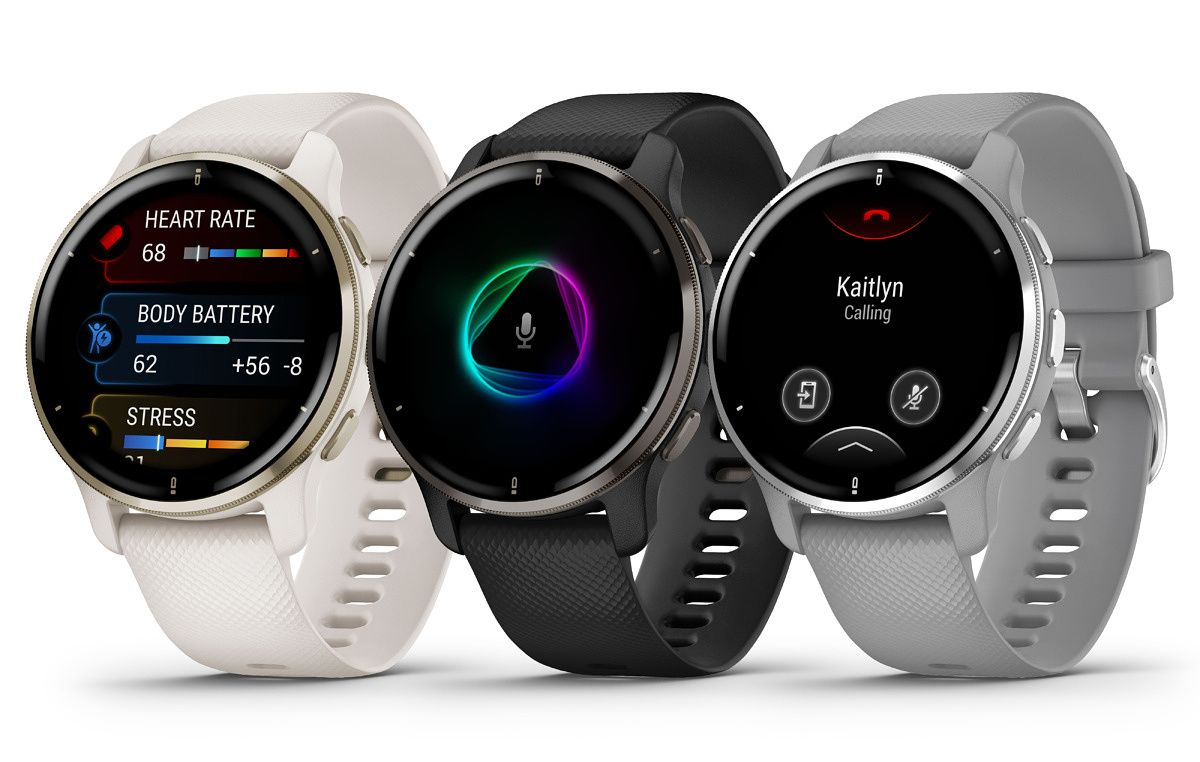
Garmin has made a name for itself for its health and fitness tracking products, and the Venu 2 Plus banks heavily on those capabilities. It’s not a full-blown smartwatch as it does not have an app store or other advanced smartwatch features, but it carries over most of its feature set from the Venu 2 before it.
The Garmin Venu 2 Plus comes with a 43mm case and a standard 20mm strap, a circular AMOLED with always-on mode, upto 9 days of battery life, Garmin Pay for contactless payments, notification mirroring, and internal storage for downloaded music. The watch can also be used as a speakerphone for phone calls, similar to a Wear OS smartwatch or Apple Watch. This watch is a bit expensive at $449.99, but several fitness enthusiasts swear by Garmin’s health and fitness tracking capabilities, so it is worth a look if those are high on your priority list.
- The Garmin Venu 2 Plus prides itself on its fitness and tracking capabilities. It's not a full-blown smartwatch, but it has enough smarts to accomplish most practical smartwatch tasks. Get it if accurate fitness tracking is high up on your priority list.
That sums up our picks for the best of CES 2022, but what announcements stood out for you from CES 2022? Let us know below, over on Twitter, or in the XDA Forums!
The post These are the best of the best products at CES 2022 appeared first on xda-developers.
from xda-developers https://ift.tt/31Ai7X5
via IFTTT







































